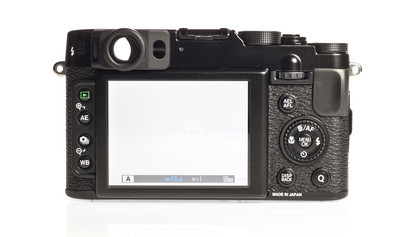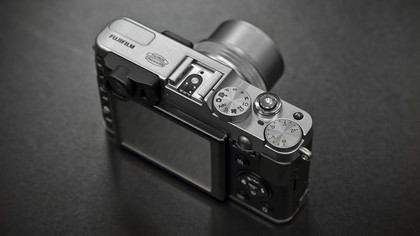Why you can trust TechRadar
We had extremely high hopes for the Fuji X20, since its predecessor the Fuji X10 had been one of our favourite compact cameras of the past few years. Luckily, we have not been disappointed by the images that the Fuji X20 is capable of producing.
Pictures are full of detail, displaying bright and punchy colours, without being over the top. Contrast is generally good, and with the ability to alter 'film simulation' modes, you've got the option to customise shooting to suit your needs.
When the light is good, the Fuji X20 is capable of producing some fantastic images that rival those from cameras with larger sensors, and it's certainly one of the better models you can get for this size and price.

The lens is an excellent performer, with the f/1.8 maximum aperture making both shooting in low light easier and giving you the option to create great shallow depth of field effects. There's also a lovely smooth drop off in focus with beautiful bokeh effects that will please most photographers.
As the light starts to drop, the Fuji X20 puts in a decent job at higher sensitivities (ISO 800 and above), with noise starting to become a problem only at very high sensitivities such as ISO 3200.
As always, however, it's usually better to be able to get a shot that's good enough for small printing sizes and/or web use than not get a shot at all.

Generally, automatic white balance does an excellent job of accurately reproducing the colours in a scene, even under mixed or artificial lighting. A couple of times during our testing, the camera struggled ever so slightly, erring towards a warm tone, but overall the performance was impressive. If you do find the camera struggles, it's relatively easy to switch to a more appropriate white balance setting.
Sign up for breaking news, reviews, opinion, top tech deals, and more.
Multi-purpose metering (referred to as photometry by Fujifilm) does a good job on the whole, working to produce accurate exposures in a variety of different lighting situations. There are occasions when the camera starts to struggle in high contrast areas, in which case switching to spot metering usually does the job.
One of the key improvements Fuji claims to have made to the X20 is its autofocusing speed. We found that it locks onto a subject very quickly indeed, making off the cuff shots pretty easy.

With the option to activate macro or super macro, there's also the ability to get very close to the subject and fill the frame. Macro focusing is available as close as 1cm to the subject, and is a nice option on a premium camera, elevating it above some of those with larger sensors such as the Sony RX100 or Canon G1 X.
Fuji has put some good thought into the more creative options available on the X20. For maximum flexibility, the film simulation modes are best, since they can be used while shooting in raw format. This means that should you change your mind about the simulation down the line, you can work with a clean file.
There's also different digital filters under Advanced Mode, which are fun to experiment with. These include Toy Camera, Pop Colour and Dynamic Tone. It will be down to personal preference which ones you enjoy using the most, but one downside is that they can't be shot while using raw format, so you're stuck with the filter effect permanently.

Another interesting feature is the Motion Panorama mode. This gives you a number of options for creating ultra wide-angle shots, simply by sweeping the camera across the scene. The camera stitches the panoramas together pretty quickly and the resulting images are fun to look at. Zooming into panoramas at 100% does reveal some loss of detail and smudging, but at web sizes there's not too much of a concern.
The Fuji X20 keeps the same 460,000 dot, 2.8-inch TFT LCD screen as its predecessor. It would have been nice if Fuji had upped the resolution to compete with some of the other premium compact cameras on the market at the moment.
That said, it's very bright and clear and doesn't suffer too badly from glare and reflection. As it has an optical viewfinder, if the sun does prove too much of a problem, you can use this to compose your images.
One thing that has left us a little disappointed is the Fuji X20's battery life. During our testing, the camera died after 2-3 hours of moderate-heavy use. While this should mean that it'll last the whole day with less frequent use, for street photographers and travelling photographers hoping to capture a lot of shots in a day, it could be problematic. We'd recommend purchasing an extra battery to pack in your bag.
